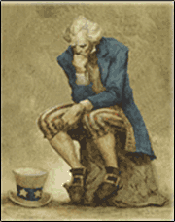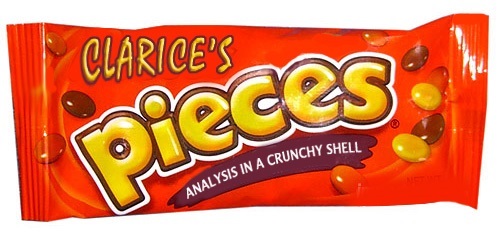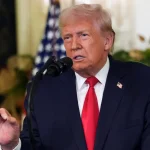
–>
April 9, 2023
In a 107-page split opinion, the U.S. Court of Appeals for the District of Columbia may well have torched the outrageous overcharging of hundreds of people who peacefully walked through the Capitol, a public building, on January 6, 2021.
‘); googletag.cmd.push(function () { googletag.display(‘div-gpt-ad-1609268089992-0’); }); }
The question before the court was whether the phrase “obstructing, influencing, or impeding an official proceeding, in violation of 18 U.S.C. § 1512(c)(2)” warrants charging those who peacefully walked through the Capitol with felonies.
The decision by the U.S. Court of Appeals for the District of Columbia means that the charge — the obstruction of an official proceeding before Congress — can continue to be used in the Justice Department’s prosecutions related to the Jan. 6 riot. It could also ultimately be used against Mr. Trump should the special counsel, Jack Smith, decide to file a case against him related to his efforts to overturn the 2020 election.
But even though the three-judge panel, in a 2-1 ruling, left in place the status quo and temporarily avoided crippling hundreds of Jan. 6 cases by invalidating the obstruction count, it still presented a serious challenge to the Justice Department moving forward.
‘); googletag.cmd.push(function () { googletag.display(‘div-gpt-ad-1609270365559-0’); }); }
A provision of the law requires proving that any interference with a congressional proceeding be done “corruptly.” Two of the judges said they were inclined to define that term in a narrow way as receiving a personal benefit — even though the panel as a whole put off a final decision on the issue. The split decision left wiggle room for defense lawyers to try a flurry of complicated new efforts to invalidate the charge in all of the cases in which it has been used.
A future ruling that narrowed the definition of “corruptly” could have significant effects on the Jan. 6 prosecutions.
The three defendant appellees were not among the hundreds of demonstrators who engaged in nothing but walking through: each was charged with some form of physical encounter with law enforcement. The lower court held that assaultive conduct is not covered by this statute because the conduct must have included what was defined in a prior subsection, which requires action relating to “a document, record, or other object.”
The higher court, in a 2-1 decision, disagreed, two of the three court panel holding that “§ 1512(c)(2) applies to all forms of corrupt obstruction of an official proceeding, other than the conduct that is already covered by § 1512(c)(1).”
So why does this case pose a very substantial problem for the prosecution?
Judge Florence Pan, who wrote the majority opinion, went beyond the meaning of overt conduct sufficient to meet the statutory test to the question of a party’s motive; that is, was the conduct engaged in with ”corrupt” intent which the statute requires. And here is a split that may doom cases already decided and others still on the docket. Judge Justin Walker concurred in part, and he and the dissenting judge’s discussion describe the rickety foundation of the ruling for future challenges.
‘); googletag.cmd.push(function () { googletag.display(‘div-gpt-ad-1609268078422-0’); }); } if (publir_show_ads) { document.write(“
I do not join Section I.C.1 of the lead opinion — which declines to decide the scope of (c)(2)’s “corrupt[]” mental state — because I believe that we must define that mental state to make sense of (c)(2)’s act element. If (c)(2) has a broad act element and an even broader mental state, then its “breathtaking” scope is a poor fit for its place as a residual clause in a broader obstruction-of-justice statute. See Van Buren v. United States, 141 S. Ct. 1648, 1661 (2021) (reasoning that “breathtaking” scope “underscores the implausibility of the Government’s interpretation”).
Instead, I would give “corruptly” its long-standing meaning. It requires a defendant to act “with an intent to procure an unlawful benefit either for himself or for some other person… The defendant must “not only kn[ow] he was obtaining an ‘unlawful benefit,’” it must also be “his ‘objective…’ “corruptly” makes sense of (c)(2)’s place in the statutory scheme and avoids rendering it a vague and far-reaching criminal provision.
He cites numerous criminal case opinions in which this is the standard. But he held that even under his reading of the term “corruptly,” the appellants met the statutory test and the judgment should stand.
 Judge George Katsas dissented. He contends that the government’s reading of the statute is both overly broad and unconstitutional. Aside from disputing the correct means of interpreting the statute, he notes how much harder the punishment is should the two parts of the law be treated as one: “By collapsing most of section 1512 into its subsection (c)(2), the government’s interpretation would lump together conduct warranting up to three decades of imprisonment with conduct warranting at most three years — a distinction reflected in the broader structure of section 1512. “
Judge George Katsas dissented. He contends that the government’s reading of the statute is both overly broad and unconstitutional. Aside from disputing the correct means of interpreting the statute, he notes how much harder the punishment is should the two parts of the law be treated as one: “By collapsing most of section 1512 into its subsection (c)(2), the government’s interpretation would lump together conduct warranting up to three decades of imprisonment with conduct warranting at most three years — a distinction reflected in the broader structure of section 1512. “
(Doubtless the prosecution’s lumping the two sections together maximizes the pressure on defendants to plead guilty, which is surely why the government chose to blur the distinction.) Moreover, he contends that the government’s interpretation renders other sections of the law redundant:
Here, the government’s interpretation of subsection (c)(2) would swallow up all of the immediately preceding subsection (c)(1), most of section 1512, and much of the entire chapter 73, reaching dozens of offenses covering much narrower acts and authorizing much lower penalties. I am unaware of any case resolving ambiguity in favor of such wholesale redundancy.
Generally speaking, I tend to believe Congress meant each section to have some independent meaning or, at a minimum, must be held to that standard. Continuing with his assertion that to read the statute as the government and Judge Pan would leads to anomalous results to the detriment of defendants:
“Rudimentary forms of obstruction, such as picketing, receive the lowest penalty. And the most sophisticated or pernicious forms, such as shredding documents or fabricating evidence, receive the highest. The government’s interpretation would collapse all of this, making any form of obstructing an official proceeding a 20-year felony.”
He also notes that this section of the law had been in effect for two decades and was used in thousands of cases, but not once before these January 6 prosecutions did the government claim it covered conduct so broadly as to not require impairment of evidence.
He takes issue with the concurring opinion in several respects, but most importantly respecting the consequences of following it:
The concurrence’s approach is driven by a laudable goal — narrowing what the concurrence recognizes would otherwise be the “breathtaking” and untenable scope of the government’s interpretation of section 1512(c)…. But even with the concurrence’s torqued-up mens rea, section 1512(c)(2) still would have improbable breadth. It would continue to supercharge comparatively minor advocacy, lobbying, and protest offenses into 20-year felonies, provided the defendant knows he is acting unlawfully in some small way. The concurrence imagines a protestor unaware that federal law prohibits picketing outside the home of a judge to influence his or her votes. 18 U.S.C. § 1507. But even that hypothetical protestor would be protected only until the jurist, a neighbor, or the police told the protestor what the law is. After that, the concurrence’s position would expose the protestor not only to the one-year sentence set forth in section 1507, but also to the twenty-year sentence set forth in section 1512(c).
In sum, he argues forcefully that his colleagues are wrong — that the only proper way to view this provision of law is to limit its application to those whose conduct impairs the “integrity or availability of evidence,” and while he finds that the defendants’ conduct violated several laws, “obstruction” of Congress is not among those.
This statute was used by the prosecution against 300 defendants so far, and Julie Kelly has tweeted that she believes in none of those cases did the jury instructions require the government to prove the defendant had an unlawful or personal benefit to commit obstruction of an official congressional proceeding.
The Department of Justice can seek an en banc hearing on the subject, but unless it does and its reading of the statute is upheld by the full court, you can expect a flurry of motions to dismiss cases against those charged with obstruction and similar efforts to reverse convictions of those who, unlike the defendants in these three cases, engaged in no independent violations of law.
<!– if(page_width_onload <= 479) { document.write("
“); googletag.cmd.push(function() { googletag.display(‘div-gpt-ad-1345489840937-4’); }); } –> If you experience technical problems, please write to [email protected]
FOLLOW US ON
<!–
–>
<!– _qoptions={ qacct:”p-9bKF-NgTuSFM6″ }; ![]() –> <!—-> <!– var addthis_share = { email_template: “new_template” } –>
–> <!—-> <!– var addthis_share = { email_template: “new_template” } –>






